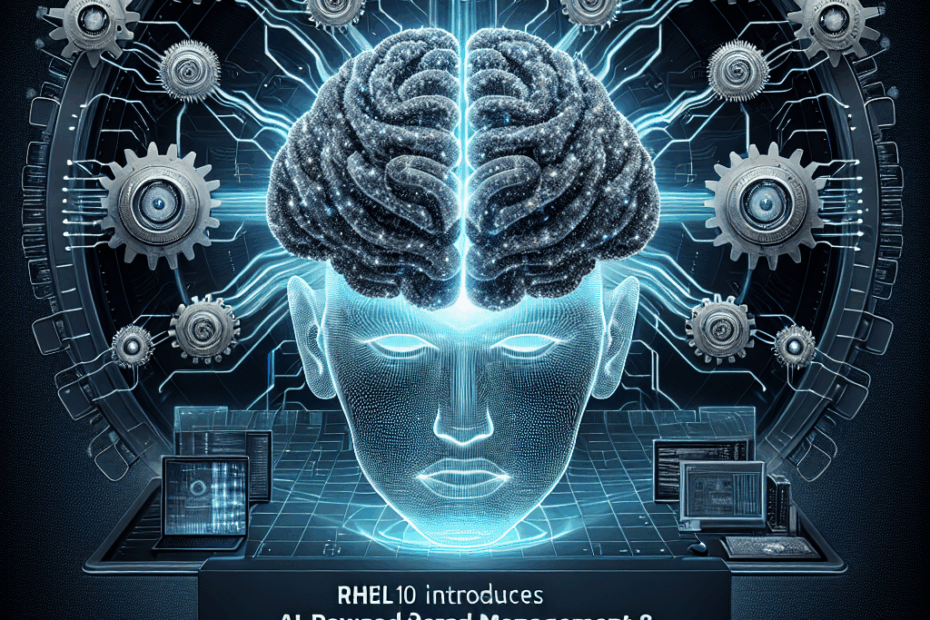“`html
Red Hat’s New Linux: Getting AI Help With Your Servers!
Hey everyone, John here! Today, we’re diving into the latest news from Red Hat, a big name in the world of Linux. They’ve just announced their new Red Hat Enterprise Linux 10 (RHEL 10), and it’s bringing something really cool to the table: AI-powered management. Think of it as having a super-smart assistant for your servers!
What’s the Big Deal With Lightspeed?
The coolest part of this new release is something called Lightspeed. It’s like having a built-in AI expert that helps you build, set up, and manage your Red Hat Linux systems. It uses simple commands, so you don’t have to be a super-genius to use it.
Lila: John, what exactly does “build, deploy, and manage” mean in this context? It sounds complicated!
John: Great question, Lila! Think of it like building a house (building), moving all your furniture in (deploying), and then making sure everything runs smoothly, like fixing the plumbing or painting the walls (managing). In the server world, it means setting up the system, getting your applications running on it, and keeping everything working properly over time.
Making Linux Easier for Everyone
Red Hat says that there aren’t enough people out there who are experts in Linux administration. Lightspeed is their way of solving this problem. It’s like giving everyone a cheat sheet and a helpful guide all rolled into one! The AI can understand what you’re trying to do and give you advice on the best way to do it. It can even help you troubleshoot problems. So, whether you’re a newbie or a seasoned pro, you can manage your Linux systems much more efficiently.
Lila: “Troubleshoot?” Is that like when my computer freezes and I have to restart it?
John: Exactly, Lila! “Troubleshooting” is just a fancy word for figuring out what’s wrong and fixing it. Lightspeed can help you do that with your Linux systems.
Protecting Your Data From Future Attacks
Here’s another important thing: RHEL 10 is the first enterprise Linux to have built-in compliance with Federal Information Processing Standards (FIPS) for something called “post-quantum cryptography.”
Lila: Wait, “post-quantum cryptography?” That sounds like something out of a science fiction movie!
John: It kind of does, doesn’t it? Basically, it means that RHEL 10 is designed to protect your data from future attacks that might use super-powerful “quantum” computers to break current security measures. Think of it as building a super-strong lock for your house before anyone even invents a key that can pick the old one. It uses new, super-secure algorithms (think of them as secret recipes for encryption) to keep your data safe, even if someone steals it today. They won’t be able to read it later when quantum computers become more common.
Other Cool Features in RHEL 10
Here are a few more things that RHEL 10 brings to the table:
- Image Mode: This is a consistent way to build and manage your operating system using container technologies. It’s like having a standard template for creating your systems, making everything more organized.
- Hybrid Cloud Ready: You can run pre-configured versions of RHEL on popular cloud platforms like AWS, Google Cloud, and Microsoft Azure. This makes it easy to use RHEL in different cloud environments.
- Expanded IT Toolkit: You can add even more tools to RHEL through the Red Hat Enterprise extensions repository. It’s like an app store for your Linux system!
- Partner-Validated Solutions: RHEL 10 works well with hardware designed for AI and other demanding tasks. This means you can get the best performance for your most important workloads.
- Security Select Add-On: Red Hat will soon offer a way to request fixes for specific security vulnerabilities. This gives you more control over the security of your system.
My Thoughts and Lila’s Perspective
John: I think this is a significant step forward for Red Hat. Making Linux easier to manage with AI will help a lot of organizations that are struggling to find skilled Linux administrators. The focus on future-proofing security with post-quantum cryptography is also a smart move.
Lila: From a beginner’s point of view, it’s really exciting to see AI being used to make complicated things like Linux more accessible! I’m still learning, but it sounds like Lightspeed could be a real game-changer.
This article is based on the following original source, summarized from the author’s perspective:
Red Hat Enterprise Linux 10 adds AI-powered
management
“`
